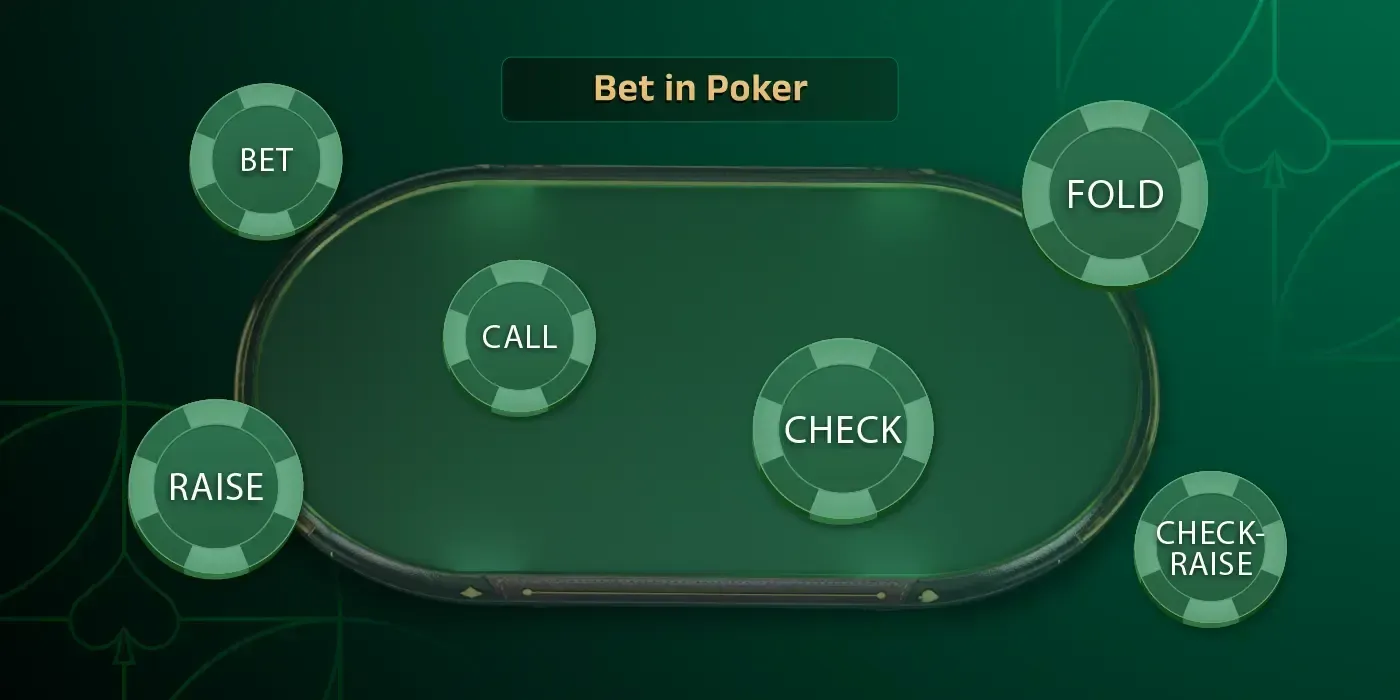
Bet in Poker: Rules and Strategy
The concept of betting in poker dates back to the early 19th century, where the players would make side bets to raise the stakes and add to the excitement. Bet in poker over time has become a key strategic element where players will wager chips or money based on the strength of the cards they hold. Today, there are a lot of betting rounds and structures involved that shape the modern poker player’s strategy and approach towards the game or variant they are playing.
Table of Contents
Explanation of Bet
In a standard game of poker, the term ‘Bet’ means a wager made by a player when no previous action has taken place during the current round of play. For example: If you are the first player to take action on the current round, and you put chips into the pot – that’s called making a ‘Bet’.
However, if another player has already made a ‘Bet’ before your turn, then the choices are categorized differently. In such a scenario, if you want to put more chips into the pot than your opponent, then it is called a ‘Raise’. A ‘Raise’ is a specific type of wager, that is an increased amount over the original wager, and other players must call the same amount to stay in the round.
In another situation if you are willing to just match the original bet made by the previous player, then that specific wager is called – ‘Call’. To ‘Call’ means that you are committing the same amount of money as the original wager to stay in the round.
Though both ‘Raising’ and ‘Calling’ are both types of bets, it depends on your starting position. If you are the first to act and put in money, then that’s a ‘Bet’. But when you respond to your opponent’s initial bet, you can either ‘Raise’ or ‘Call the original wager.
Also explore: Poker Actions
How to Use Bet as Part of Your Poker Strategy?
Betting plays a crucial role in poker, adding to the excitement and also making players commit to the action. It has a significant impact on winning and losing, therefore here’s a brief breakdown of using betting in various contexts:
1. Betting for Value:
The main purpose here is to extract chips from players who are likely to call with worse hands.
When to use it:
Strong Hands: When you have a strong hand, betting for value is to make your opponent put more money into the pot while they are still willing to call.
Bet Sizing: Bet a small amount that is like bait for your opponent. Make them think that your hand is weak and you’re just testing the waters. They will likely call it, increasing the value of the pot.
Also check: Poker Strategy
2. Betting as a Bluff/ Semi-Bluff:
The main objective here is to make your opponent think that you have a super strong starting hand, and force them to fold even if they have better cards.
When to use it:
Bluffing: This is when you want to build a story that you have a super strong hand, but you actually don’t. This is applicable when you have been playing in a way, where the opponent might believe that you actually do have a strong hand.
Semi-Bluffing: This works when you have a straight draw or a flush draw on the ‘Flop’.. You can semi-bluff here considering there is a chance to improve your hand and take the pot. Your opponent will fall for it and keep calling your bets.
Also read: Bluff Game Rules in Poker
3. Betting for Protection:
Mainly done to protect your hand from being outdrawn or prevent your opponent from seeing the ‘Turn’ or ‘River’ cards to improve their hands.
When to use it:
Marginal Hands: When you have a hand that can easily be outdrawn if the opponent gets to see another card. Betting here will simply make it harder for the opponent to see the next card and will add a cost to it.
Bet Sizing: The size of the bet should be enough for the opponent to make him call here, but not too expensive to make him fold.
Also read: How to Play Poker
Conclusion
The strategic influence of betting smartly cannot be discounted. As a player, while holding a strong hand you must use betting as a technique to extract as much value as possible from the weaker hands. If you are good at bluffing, then bet to make your opponent fold better hands, even if your hand strength is not good enough. Being effective at betting means you have also got to learn how to read your opponents and their betting patterns during a game.
Explore Important Poker Terms:
| Ante in Poker | Outs in Poker | Tilt in Poker |
| Poker Equity | Muck in Poker | Call in Poker |
| Poker Staking | River Poker | Check in Poker |
| All in Poker | Pair Poker | Limp in Poker |
 Call support
Call support RNG certified
RNG certified Responsible gaming
Responsible gaming Safe & secure payments
Safe & secure payments ISO certified company
ISO certified company
